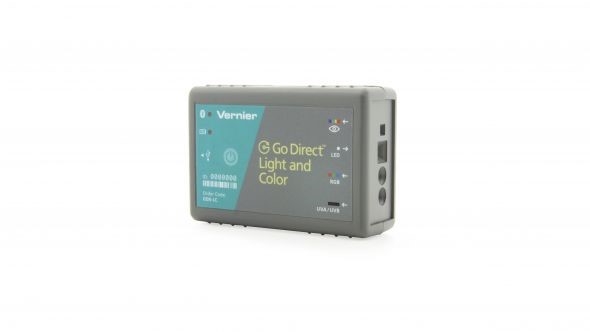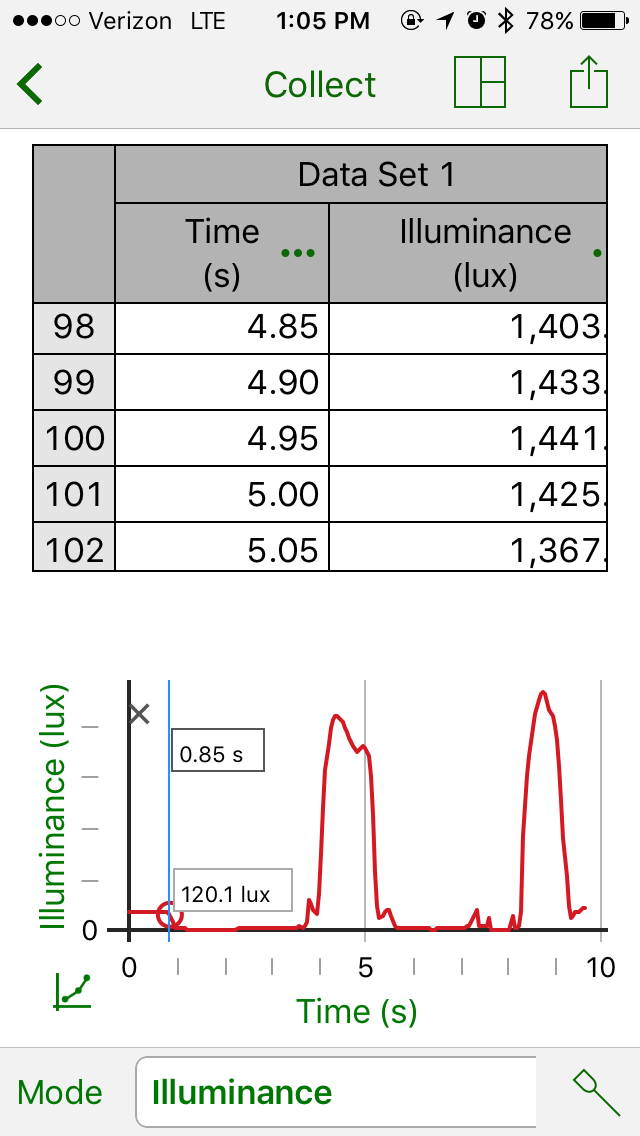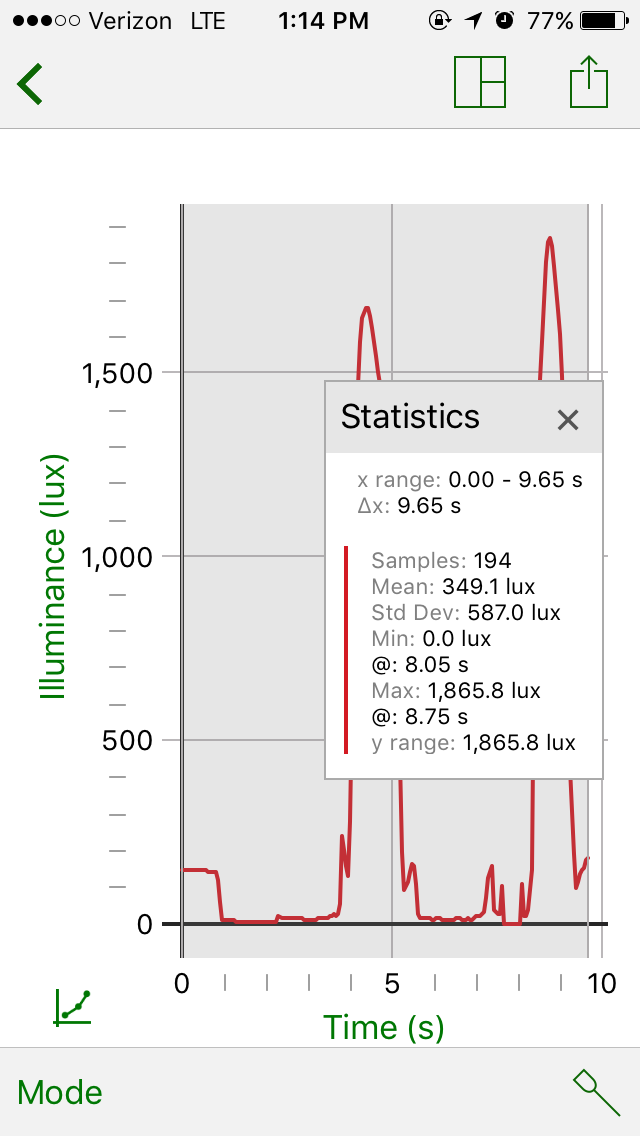Vernier: Go Direct Light and Color
By Edwin P. Christmann
Posted on 2018-09-12
Introduction
The Go Direct Light and Color Sensor is a powerful and versatile light sensor that measures visible light, the ultraviolet electromagnetic spectrum, and does color analysis. As seen in the video, by using an RGB color sensor, the relative primary colors of light can be detected with this device.
As seen in Image 1., the Go Direct Light and Color connects wirelessly via Bluetooth® or wired via USB to your device, e.g., laptop, etc. Once connected, Vernier’s Go Direct Light and Color Sensor combines the power of multiple sensors to measure light intensity in the visible range and UV portions of the electromagnetic spectrum.
Another excellent benefit of the Go Direct Light and Color Sensor has multiple options to measure light intensity in the visible range and UV portions of the electromagnetic spectrum and can be used for the study of visible light intensity, UV light intensity, and color investigations. Moreover, the sensor connects to the Graphical Analysis 4 app, which facilitates student understanding with real-time graphs of experimental data and intuitive analysis tools.
What’s Included
• Go Direct Light and Color Sensor
• Micro USB Cable
Image 1. Go Direct Light and Color Sensor

Below are samples of how the sensor collects data using the sensor. As you can see in Image 2 and Image 3, the sensor collects data over time and measures Illumance (lux) at differing levels of intensity. Hence, Image 4 shows how descriptive statistics can be displayed from the measurements.
Image 2. Data for Low Illuminance (lux)

Image 3. Data for High Illuminance (lux)

Image 4. Descriptive Statistics

Description
Visible light sensor:
The fast sampling rate for the visible light sensor (1000 Hz) allows you to observe the flicker of fluorescent lamps.
Red, green, blue (RGB) color sensor:
Use the RGB sensor to determine the relative contribution of red, green, and blue light. A built-in white LED provides uniform illumination when the sensor is placed directly on a surface, reducing the effect of variable ambient light.
UV sensor:
Ideal for experiments using sunlight and UV lamps, the UV sensor responds well to ultraviolet radiation in the UVA and UVB spectrum.
The Go Direct Light and Color Sensor can be used in a variety of experiments:
• Explore light intensity as a function of distance.
• Conduct polarized filter studies.
• Observe the flicker of fluorescent lamps.
• Perform reflectivity studies, including color analysis.
Specifications
Visible Light Sensor:
• Wavelengths: 400–800 nm
• Range: 0 to 150,000 lux
• Maximum sampling rate: 1,000 samples/s
UV Sensor:
• Responsive to UVA and UVB wavelengths
• Maximum sampling rate: 1 Hz
RGB Sensor:
• Peak response: 615 nm peak (red); 525 nm peak (green); 465 nm peak (blue)
Maximum sampling rate: 0.5 Hz
Summary
The Vernier Go Direct Light and Color Sensor is perfect for educators who are using technology in the classroom. From our experience, this excellent sensor is user-friendly and enables students to use data collection and laboratory techniques with ease. Moreover, the device is reasonably priced ($79) and supports the NSES Standards for chemistry and physical science.
Price $79
Edwin P. Christmann is a professor and chairman of the secondary education department and graduate coordinator of the mathematics and science teaching program at Slippery Rock University in Slippery Rock, Pennsylvania. Caitlin Baxter is a graduate student in the mathematics and science teaching program at Slippery Rock University in Slippery Rock, Pennsylvania.
Disclaimer: The views expressed in this blog post are those of the author(s) and do not necessarily reflect the official position of the National Science Teaching Association (NSTA).


